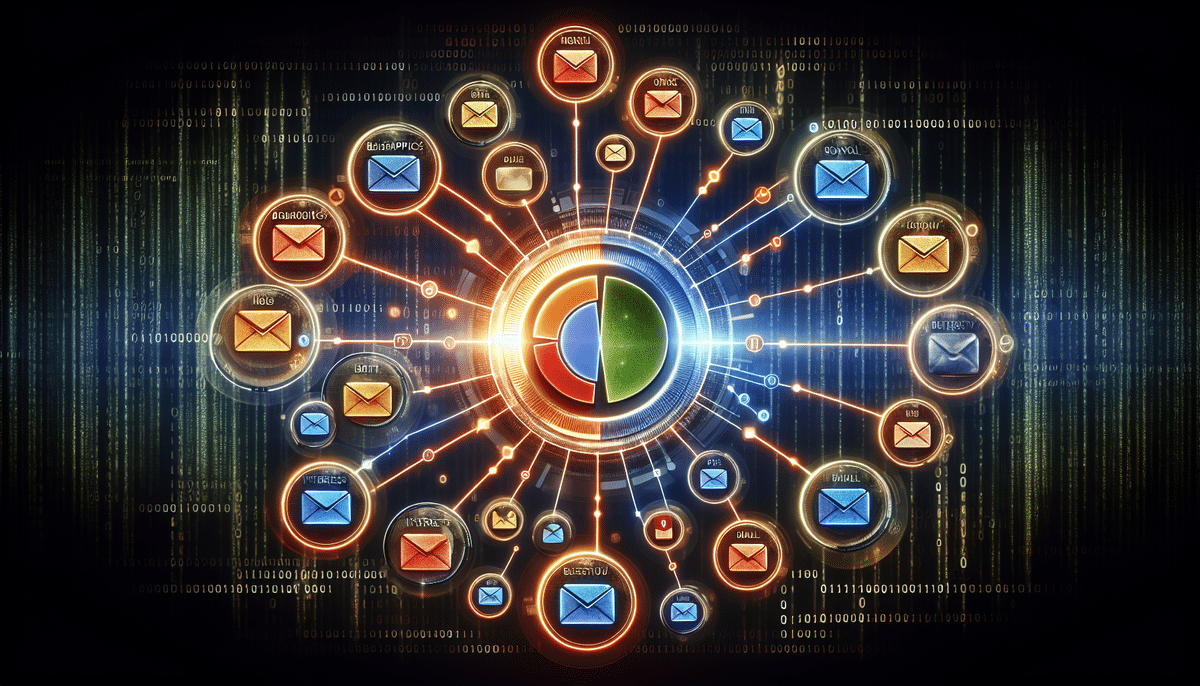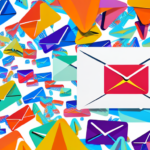How to Use Email Segmentation to Improve Your Email Marketing Strategy
As a marketer, you're probably always on the lookout for ways to enhance your email marketing strategy and increase the effectiveness of your campaigns. One powerful tool that can elevate your email efforts is email segmentation. Email segmentation is the process of dividing your email list into smaller, more targeted groups based on specific criteria, such as demographics, interests, or behavior. In this article, we'll explore the fundamentals of email segmentation and provide a comprehensive guide on how to implement it effectively in your marketing strategy.
Understanding the Basics of Email Segmentation
Before diving into the various ways you can utilize email segmentation to boost your marketing strategy, it's essential to understand its core principles. Essentially, email segmentation involves dividing your email list into groups based on shared characteristics. The goal is to send more targeted and relevant emails to each group based on their unique interests and needs. According to a 2023 Campaign Monitor report, segmented email campaigns can see up to a 760% increase in revenue.
One crucial factor to consider when segmenting your email list is the type of content that resonates with each group. For example, if you have a segment of subscribers who have previously purchased a specific product, you may want to send them emails about related products or accessories. Conversely, if you have a segment interested solely in your blog content, you might send them emails featuring your latest posts. By tailoring your content to each group, you can significantly increase engagement and the likelihood of subscribers taking action.
Benefits of Using Email Segmentation in Your Marketing Strategy
The benefits of incorporating email segmentation into your marketing strategy are multifaceted. As previously mentioned, segmentation leads to more targeted and relevant emails, resulting in higher engagement rates. Additionally, segmentation provides deeper insights into your audience, allowing you to offer more personalized and valuable content. This personalization can drive higher conversion rates, as subscribers receive exactly what they're looking for. Furthermore, segmentation can optimize your use of time and resources by focusing efforts on the most promising segments of your email list.
Another advantage of email segmentation is the ability to tailor your messaging to different stages of the customer journey. By segmenting your email list based on where subscribers are in the sales funnel, you can send targeted messages that are more likely to resonate with them. For instance, educational content can be sent to subscribers in the awareness stage, while promotional offers can be directed to those in the decision-making stage. This strategic approach can help move subscribers through the funnel more efficiently, ultimately leading to increased conversions.
How to Segment Your Email List Effectively
Effective email segmentation requires careful research and planning. Here are some steps to help you get started:
- Identify Segmentation Criteria: Determine the factors you'll use for segmentation, such as demographics, location, interests, past purchases, or engagement levels.
- Collect Relevant Data: Gather the necessary information from your subscribers through sign-up forms, surveys, or tracking behaviors.
- Choose the Right Email Service Provider (ESP): Utilize an ESP that offers robust segmentation features, making it easier to tag or label your subscribers based on your chosen criteria.
- Test and Refine: Continuously monitor the performance of your segmented campaigns and adjust your strategies based on what’s working and what’s not.
Once your email list is segmented, it's vital to tailor your content to each group. This involves creating targeted campaigns that speak directly to the interests and needs of each segment. For example, if you have a segment of subscribers interested in fitness, you could send them emails about new workout routines, healthy recipes, and fitness gear.
Personalization is another critical aspect of effective email segmentation. Utilize your subscribers' names, past purchase history, and other data to craft personalized messages that resonate with them. Personalized emails can lead to higher open rates, click-through rates, and overall engagement.
Demographic Segmentation: Targeting by Age, Gender, and Location
Demographic segmentation involves dividing your email list based on demographic factors such as age, gender, and location. This approach is particularly effective for businesses offering products or services tailored to specific age groups or geographic regions. For instance, a clothing retailer might send different emails to women in various age groups, featuring styles that are currently popular within each demographic. Similarly, a restaurant could target customers in different regions with promotions relevant to their local area.
Psychographic Segmentation: Targeting by Interests, Values, and Lifestyles
Psychographic segmentation focuses on deeper psychological characteristics, including interests, values, and lifestyles. This type of segmentation is ideal for businesses that cater to specific passions or hobbies. For example, a pet food company might segment its list based on the types of pets owners have, while a fitness app could segment users based on their preferred workout types. This allows for highly personalized content that aligns with each subscriber's unique preferences.
Behavioral Segmentation: Targeting by User Actions and Preferences
Behavioral segmentation divides your email list based on how subscribers have interacted with your brand in the past. This can include actions such as recent purchases, abandoned carts, or specific links clicked within your emails. By targeting messages based on these behaviors, you can deliver highly relevant content tailored to each subscriber's actions and preferences.
Using Data to Create Customized Email Campaigns for Each Segment
Once your email list is segmented, the next step is to craft customized email campaigns for each segment. This involves creating content that directly addresses the interests and needs of each group, utilizing personalization to make each email feel unique. For example, you might develop different versions of the same email with varying subject lines or calls to action, or include personalized product recommendations based on a subscriber's past behavior.
Crafting Engaging Subject Lines and Content for Different Segments
When developing subject lines and content for your segmented campaigns, it's essential to consider the specific interests, priorities, and pain points of each segment. Use language and imagery that resonate with each group, and provide valuable information or offers that address their unique needs. Additionally, ensure your emails are concise and visually appealing, featuring a clear call to action that encourages subscribers to engage.
Personalizing Emails with Dynamic Content and Product Recommendations
Personalization is a cornerstone of effective segmentation. Utilize tools that allow you to incorporate dynamic content and product recommendations tailored to each subscriber. For example, automatically inserting a subscriber's name or location into the email can make the message feel more personal. Additionally, providing product recommendations based on past purchases or browsing behavior can significantly enhance engagement and conversion rates.
Measuring the Success of Your Segmented Email Campaigns
Measuring the effectiveness of your segmented campaigns is crucial for ongoing optimization. Track key metrics such as open rates, click-through rates, and conversion rates for each segment. Additionally, monitor your overall ROI to ensure your email marketing efforts are delivering a positive return on investment. Utilizing tools like Google Analytics or your ESP’s built-in analytics can provide valuable insights for data-driven decision-making.
Tips to Avoid Common Mistakes in Email Segmentation
While email segmentation offers numerous benefits, there are common pitfalls to avoid:
- Over-Segmentation: Creating too many small segments can make it challenging to target effectively and may lead to increased complexity in managing your campaigns.
- Lack of Testing and Refinement: Failing to continuously test and refine your segmentation strategy can result in missed opportunities for improvement.
- Ignoring Opt-In Preferences: Ensure that subscribers have explicitly opted in to receive emails from you and provide an easy way for them to unsubscribe if they choose to.
Integrating Email Segmentation with Other Marketing Channels
To maximize the impact of your email segmentation strategy, integrate it with other marketing channels. For example, you can use social media advertising to target specific segments of your email list or employ retargeting ads to encourage subscribers who have abandoned their carts to complete their purchases. Additionally, leveraging customer relationship management (CRM) software can help you track and analyze data from all your marketing channels in one centralized location. This integration enables a cohesive, omnichannel marketing approach that drives better results.
Future Trends and Innovations in Email Segmentation
As technology continues to advance, several exciting trends and innovations are emerging in the field of email segmentation. Machine learning algorithms are increasingly being used to analyze and predict subscriber behavior, enabling even more targeted and personalized campaigns. Additionally, tools that facilitate real-time segmentation and personalization are making it easier than ever to create highly relevant emails that resonate with subscribers instantly. Staying abreast of these trends will allow marketers to further optimize their email strategies and stay ahead of the competition.
Case Studies: Successful Examples of Email Segmentation in Action
Examining successful implementations of email segmentation can provide valuable insights:
- Expedia: The travel company uses segmentation to send targeted email campaigns based on subscribers' interests in specific destinations or types of travel. By offering highly relevant content and special offers tailored to these interests, Expedia has seen a significant increase in engagement and conversion rates.
- Sephora: The beauty brand leverages segmentation to personalize its emails with product recommendations based on subscribers' past purchases and browsing behavior. This personalized approach has enabled Sephora to achieve impressive results from its email campaigns, including higher open and click-through rates.
Conclusion
Email segmentation is a powerful tool that can elevate your email marketing strategy to new heights. By dividing your email list into smaller, more targeted groups and creating highly relevant and personalized content for each segment, you can increase engagement, conversion rates, and ROI from your email campaigns. By following the tips and best practices outlined in this guide and continually testing and refining your segmentation strategy, you can ensure the ongoing success of your email marketing efforts.








